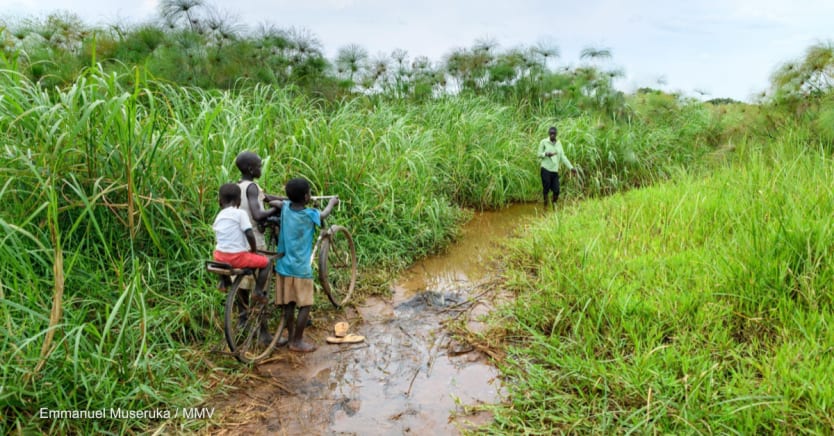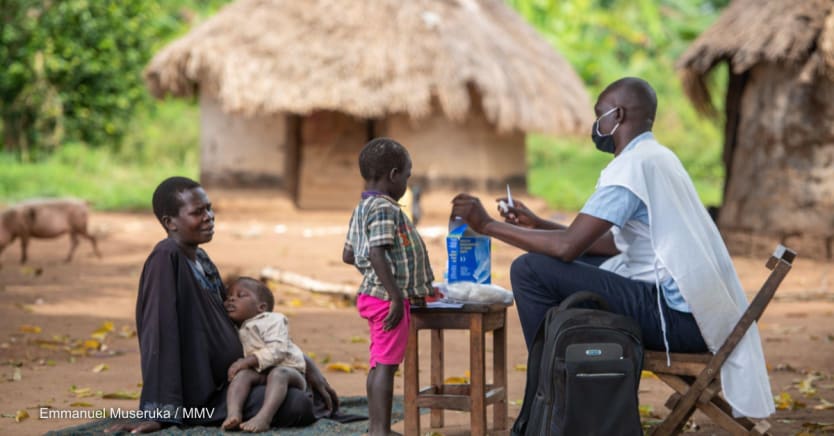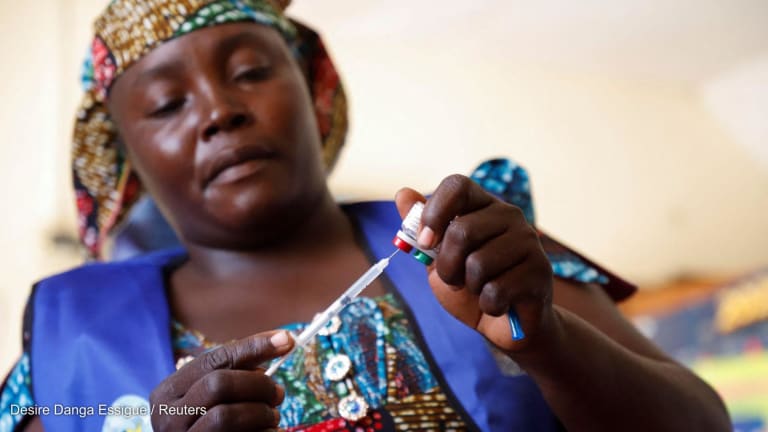
On the eve of the climate conference COP 28 — billed by many as the “Health COP” and the first-ever to feature a Health Day on its agenda — the argument that the climate crisis is also a global health crisis is gaining momentum. Whether looking through the lens of mitigating the causes or adapting to the impacts of climate change, global health must be a priority and serve as a key indicator for governments and businesses charting the way forward along the 1.5C pathway.
Within this, we cannot overlook the impacts climate change has on poverty-related diseases, particularly vector-borne diseases such as malaria, and how responding to these impacts can improve global health equity and security. After all, these diseases of poverty are prevalent in regions and countries where health care is least accessible and equitable. Given the global community’s commitment to preventing the shift across the 1.5-degree Celsius threshold set out in the Paris Agreement and achieving the U.N. Sustainable Development Goals, raising the current global health care baseline remains a priority.
The impacts of climate change are complex and multifaceted, and the full extent of the challenges they may pose remains to be seen. However, many of these impacts are already apparent and affecting people today, demanding urgency in the way we respond and adapt to them.
The impact of climate change on malaria
For malaria and other mosquito-borne diseases, we know that higher temperatures, increased rainfall, and the humidity it causes are expanding the range of their mosquito vectors. This has the potential to cause malaria to intensify or spread beyond its current range in regions where the disease is already present — Africa, Asia-Pacific, and Latin America —, threatening an increase in cases and deaths and eroding years of progress in the fight against the disease. Temperature changes can also cause shifts in the malaria season, bringing new challenges to the invaluable prevention campaigns that save so many lives every year, and warmer temperatures at higher altitudes can expose low-immune populations to the disease at a greater rate.
For the past 25 years, MMV has been working with partners to discover, develop, and deliver antimalarials to prevent and treat the disease. Our work has been critical to defending against antimalarial drug resistance and preparing for the multifaceted challenges involved in moving toward eradication, including those posed by climate change. By investing in the mitigation and adaptation of the impacts of climate change on global health now, we can ensure sustainable resilience and an equitable global health care baseline in the future.
We have also witnessed how extreme weather events caused by climate change can lead to the destruction of health care infrastructure and more severe outbreaks in malaria-endemic countries, intensifying forced displacement and homelessness along the way. For example, the 2022 floods in Pakistan and the cyclones that have hit Mozambique in recent years have caused significant surges in malaria cases, leaving those affected with little support amid weakened or entirely decimated health care systems.
Another fact we cannot ignore is that malaria is endemic in low-resource settings, which are also the regions most affected by climate-related disasters, even though these regions and their people are least responsible for emitting the greenhouse gases that cause climate change.
The global health community's role
The global health community has an important role to play in responding to the impacts of climate change and contributing to improved global health security. Facilitating the capacity for countries and health care systems to adapt to climate change is key, and doing so now includes leveraging innovations to map vulnerabilities and better understand impacts, including advanced modeling, simulation, and AI, combined with real-time surveillance and data generation, as demonstrated in a recent network session of the Asia Pacific Malaria Elimination Network, or APMEN, group titled ‘Climate, Malaria Prediction, and Implications for Elimination.’ Disease modeling groups include the Institute of Disease Modeling, a part of the Bill & Melinda Gates Foundation’s Global Health Division and the Swiss Tropical and Public Health Institute.

In addition to generating data that can inform decisions, Medicines for Malaria Venture invests in research and development to further expand the toolbox of medicines used to prevent and treat the disease and adapt to the new challenges brought on by changing climate conditions. It also leverages its partnerships to mobilize the manufacturing capacity close to where the needs are. Finally, to make the most of existing antimalarials, as well as the ones in the current and future R&D pipeline, we must support the development of sustainable and equitable health systems that are resilient to the impacts of climate change.
Related reads:
► ‘We need accountability’: On getting nutrition on the COP 28 agenda
► Climate adaptation finance gap widens by 50%, says UN report
This requires investing in the infrastructure and campaigns delivering malaria chemoprevention to the most vulnerable populations — women and children in Africa — as well as supporting national programs in their effort to constantly adapt the duration and location of the chemoprevention campaigns. It requires investing in local quality-assured manufacturers to deliver supply security for antimalarials in Africa, where 95% of the disease burden occurs. It requires malaria and other infectious diseases to be included in emergency plans, should outbreaks occur.
Investing in malaria and neglected tropical diseases is an investment in global health security — it protects people in malaria-endemic countries, benefits broader pandemic and epidemic preparedness, and helps break the cycles of poverty standing in the way of equality.
Improving global health security
If the Paris Agreement and the goal of limiting temperature increase to 1.5 degrees Celsius above preindustrial levels provides a clear structure to mitigate global emissions, the U.N. SDGs serve as a roadmap to adapt to climate change and build a sustainable world. And just as climate change is complex and multifaceted, so too is charting a path toward “peace and prosperity for people and the planet, now and into the future,” an overarching aim of the 17 SDGs.
Doing so while emerging from a global pandemic adds to this complexity, but also underscores the urgent need to raise the global health care baseline, which is possible by addressing and ultimately eradicating malaria and other neglected tropical diseases, and doing so in a manner that is adapted to climate change. Integrating global health into the COP 28 agenda is a welcome step in the right direction and a reminder that challenges require preparation and a collaborative response.









